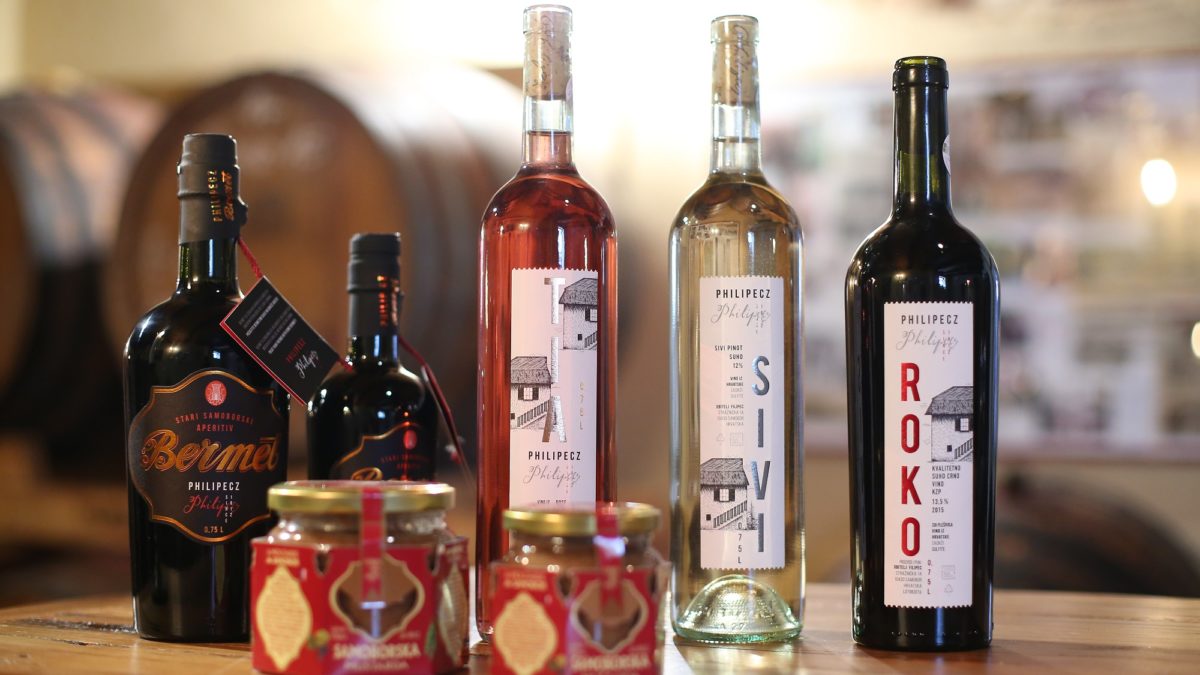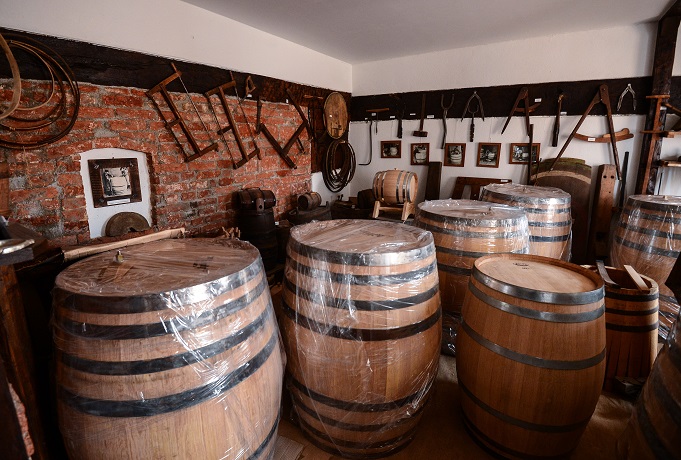The valuable work of winemakers and coopers of the Zagreb region and their dedication and skill can certainly produce miracles.

In the words of Martin Luther, “Beer is made by men, wine by God!” Although the point ought not to be taken literally, there is certainly a historical connection between the monastic form of religious life and traditional techniques of brewing and vinification. This supreme praise of wine does an extraordinary job of grasping the complexity of wine production that connoisseurs can taste all too well. However, it would be unfair to obscure the hard work of vintners and coopers behind a screen of mysticism, as their dedication and skill can also produce miracles.
The placid slopes of the hills around Samobor annually give birth to grape varieties which have found their place in the Filipec Winery. The wines Sivi (pinot gris), Tia (rosé) and Roko (coupage of Pinot Noir, Cabernet Sauvignon, Zweigelt and Frankovka) are worthy offshoots, but the owner Antun Filipec does not run from the fact that Bermet is the wine that put the family on the map. Although the exact recipe of each bermet is highly individualised and closely guarded, the ingredients of this aromatised wine variety, in times past a welcome guest at the Viennese Court, are well-known – wormwood and sugar are the principal contributors to the bitter-sweet taste but you can keep adding to the list of flavours with the addition of tropical fruit, raisins, and even horseradish. This list of ingredients conceals a divine secret: the curative properties of wormwood have been touted since ancient times, and the goddess Artemis foreordained precisely this plant as her gift to humanity, seeking to relieve pain during childbirth. The plant’s Latin name Artemisia absinthium commemorates this legend.

The Samobor Filipec Winery uses oak barrels to ripen its wines, which is a perfect fit for wines with a high alcohol content such as Bermet. While the controversy between proponents of wooden barrels and stainless steel drums continues, the key distinction points to opposing views of winemaking between the two groups. To wit, stainless steel drums do not affect the final taste of the product, while oak barrels can contribute to the sensory experience with aromas such as vanilla, oak, honey, caramel or toast. This is due to the porousness of the wood which allows small quantities of oxygen and moisture to be exchanged with the environment. When they react with the binding lignin found in the wood of the barrel, the resulting process of esterification produces compounds responsible for the so-called secondary and tertiary notes evident in taste and scent. As the final effect cannot be fully determined in advance, allowing the final part of the production to take place outside of human control appears to put these winemakers in agreement with Luther.
However, thinking this means anything is left to chance could not be further from the truth. Apart from the fact that the wine left to mature in new barrique barrels – inevitably a small proportion of the vintage – are mixed with the wine matured in used barrels of a larger volume to achieve the ideal aroma and bouquet, the process of making the barrel is extremely nuanced and controlled. Milivoj Ivo Golub of the Cooperage Golub in Jastrebarsko attests to this since, by his own admission, he is only able to use one-fifth of the available high-quality wood to produce barrels and casks due to the sensitivity of the process and the purity requirement for the staves.

Photo: Marko Prpic/PIXSELL
All the variables are taken into account: neither Antun Filipec nor Milivoj Golub can permit themselves to neglect the volume of the drums, the origin, drying method and moisture level of the wood, toasting of the staves, their thickness and many other features. It is precisely the burden of these demands which caused oak to supplant other raw materials such as pine, chestnut or black locust to such an extent. In addition to Slavonian oak, Milivoj occasionally also uses acacia and mulberry in the manufacture of winemaking containers.
This coming St. Martin’s Day will mark six and a half years of the Cooperage collection and exhibit at the Golub workshop. Alongside the numerous awards in crafts exhibitions, and above all the loyalty of vintners in Croatia and abroad, the collection is a testament to the accomplishments of the Golub family in practising this old craft. The peerless Samobor bermet is just as exemplary of the legacy of the Filipec family. If we re-examine Luther’s thought now, doesn’t it seem that making first class wine takes more than the efforts of man?